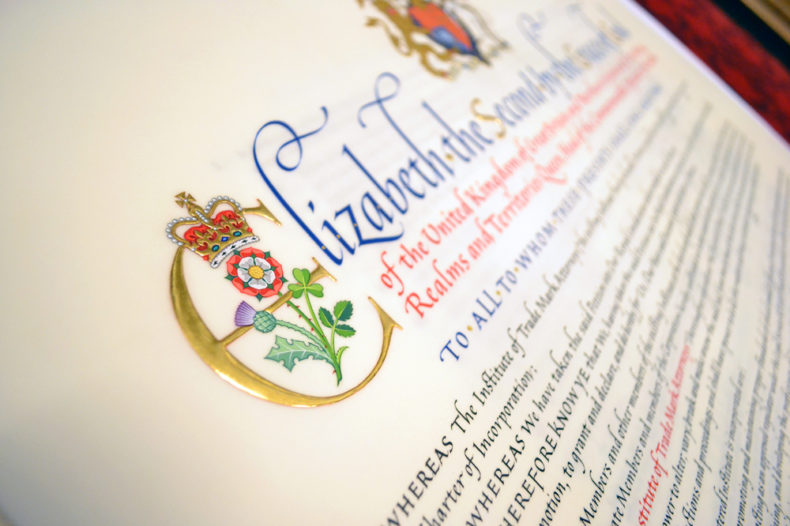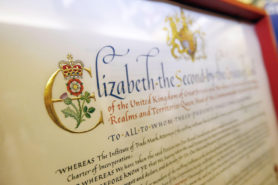Our Royal Charter
We were awarded a Royal Charter in 2016. It underlines the expertise, trust, skill and quality of service CITMA members provide.

We are proud to hold a Royal Charter. It was awarded in recognition of our work, our members’ distinctive and pre-eminent position as legal experts in the trade mark and design community, and the support we collectively provide the public.
Fully qualified CITMA members can use the official title Chartered Trade Mark Attorney, which signifies their status as the leading practitioners in their field.
Why our Charter is important
The Royal Charter underlines the expertise, trust, skill and quality of service CITMA members provide. By using a Chartered Trade Mark Attorney you should be reassured of the level of service you receive
Chartered Trade Mark Attorneys have high professional standards, maintained by a strong code of conduct and continuing professional development requirements. To be a Chartered Trade Mark Attorney you must pass a rigorous examination and training programme and continue to build on these skills.
Bringing recognition
Since 1934 we have sought to bring recognition to the work and role of trade mark attorneys, and this was the latest development of the profession.
We stand for quality of education, representation and regulation which continues today and beyond.
The Charter document itself was brought to life with gold leaf and colour by Timothy Noad, Scribe and Illuminator to HM Crown Office. It is scribed on vellum according to centuries-old tradition.
Chartered professionals date back to the 19th Century, and Royal Charters much further back than that – they are steeped in history. It is a well-known term for a number of professions from accountants to civil engineers and has a high renown and status, using it gives a credibility that is backed up by years of high quality work.
Royal Charter and regulations
Full Royal Charter and Bye-Laws
Read our full Royal Charter document
FAQs
Who are Chartered Trade Mark Attorneys?
Chartered status is a mark of quality, and only fully qualified CITMA members, those on the Register of Trade Mark Attorneys, can call themselves Chartered Trade Mark Attorneys.
The Register of Trade Mark Attorneys is maintained by the Intellectual Property Regulation Board (IPReg) who ensure those on the register meet rigorous professional standards.
Click here to read more about who Chartered Trade Mark Attorneys are
Are all CITMA members chartered?
Our membership includes those who support the work of Chartered Trade Mark Attorneys. Members who are not on the Register of Trade Mark Attorneys, as well as those who are, can use the designation:
MCITMA
or
Member of The Chartered Institute of Trade Mark Attorneys
or
Member of CITMA
Fellows are able to use the designation:
FCITMA
or
Fellow of The Chartered Institute of Trade Mark Attorneys
or
Fellow of CITMA
Click here to read the full regulation relating to titles and designations
Who can use the CITMA logo?
Why did ITMA apply for chartered status?
ITMA has a long and rich history as the pre-eminent organisation for trade marks and designs in the UK dating back to the 1930s.
We have always played a key role in educating, promoting and supporting the trade mark attorney profession and the Royal Charter formalises this role and helps increase the profile of those in the profession. It also is an assurance of quality of service.
The Royal Charter is 'reserved for eminent professional bodies or charities which have a solid record of achievement' – the new status gives CITMA and our members recognition of excellence.
It is also a badge of quality that will resonate with the public and business. We want to reassure consumers that by using the services of a Chartered Trade Mark Attorney they will receive a high quality, reliable service which is fully regulated.
Can I read CITMA's Royal Charter document?
Does IPReg continue to regulate the profession?


